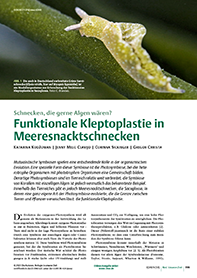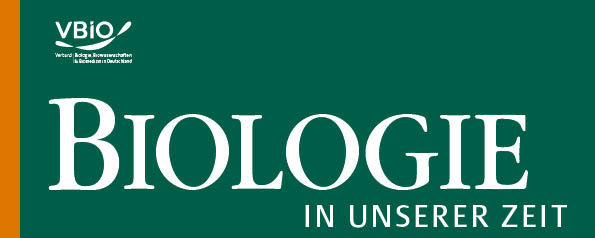Functional kleptoplasty in sea slugs
DOI:
https://doi.org/10.11576/biuz-6349Keywords:
Kleptoplastie, Photosymbiose, Meeresnacktschnecken, Sacoglossa, ChloroplastenAbstract
Some of the 500 known Sacoglossa species can keep chloroplasts photosynthetically active in their own cytosol. This phenomenon, called functional kleptoplasty, is a special form of photosymbiosis and is only found in Sacoglossa among animals. With regard to the necessary adaptations to enable functional kleptoplasty in these slugs many questions are either insuffciently answered or not at all. Especially the beneft of the “stolen plastids” (kleptoplasts) for the slugs is discussed controversially and how they can obtain the photosynthetically fxed nutrients. More intensive research on Elysia viridis, which can also be examined free of plastids, could help to answer some of these questions. In addition to various research questions, the phenomenon of functional kleptoplasty can also be implemented at school, e. g. in the context of endosymbiosis, in order to show these fascinating slugs to schoolchildren and increase their fascination for biology.

Downloads
Published
How to Cite
Issue
Section
License
Copyright (c) 2022 Katarina Kodžoman, Jenny Melo Clavijo, Corinna Sickinger, Gregor Christa

This work is licensed under a Creative Commons Attribution-ShareAlike 4.0 International License.

